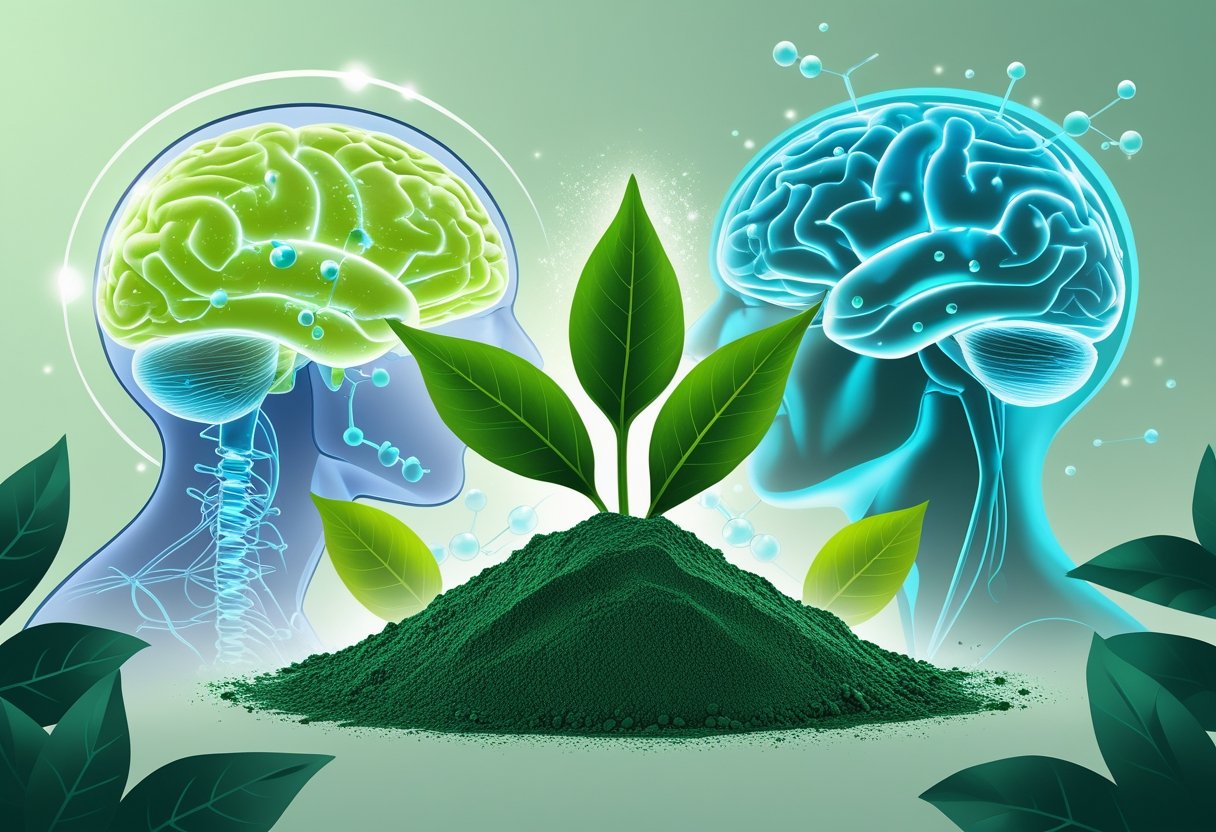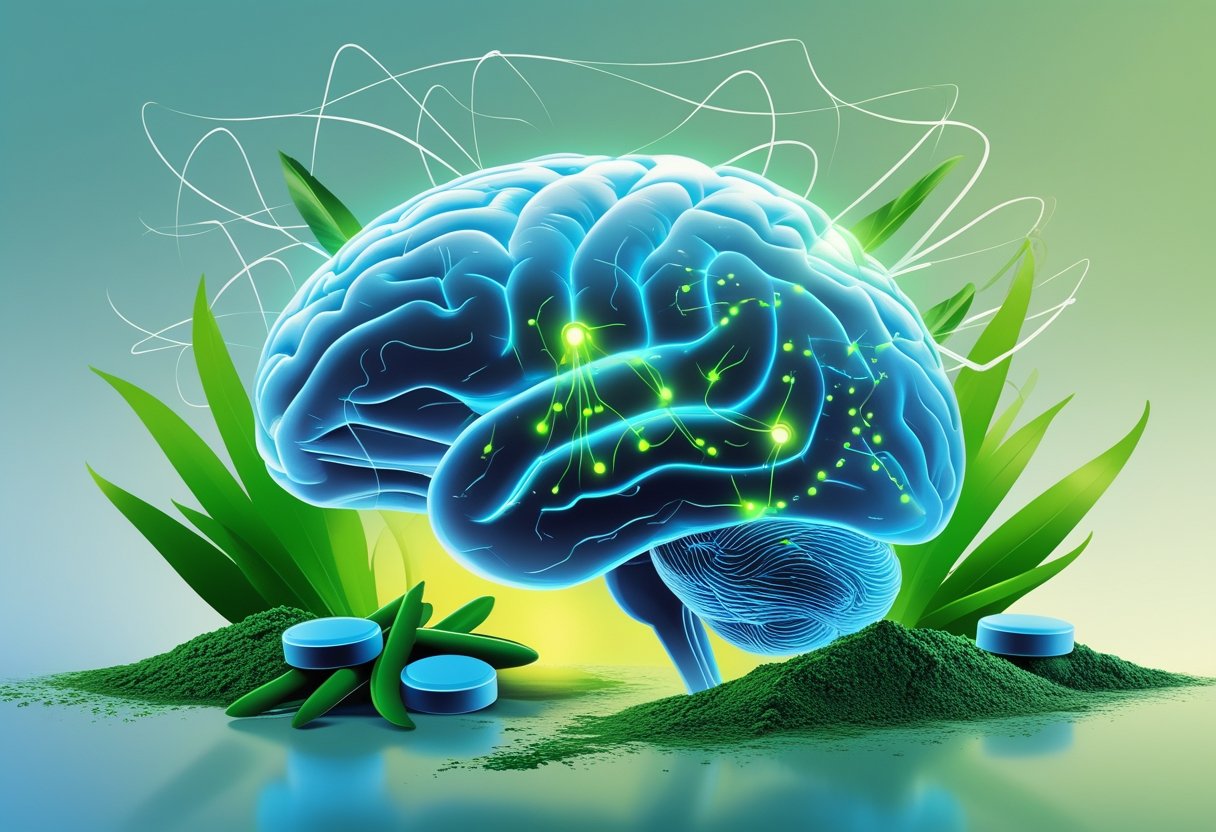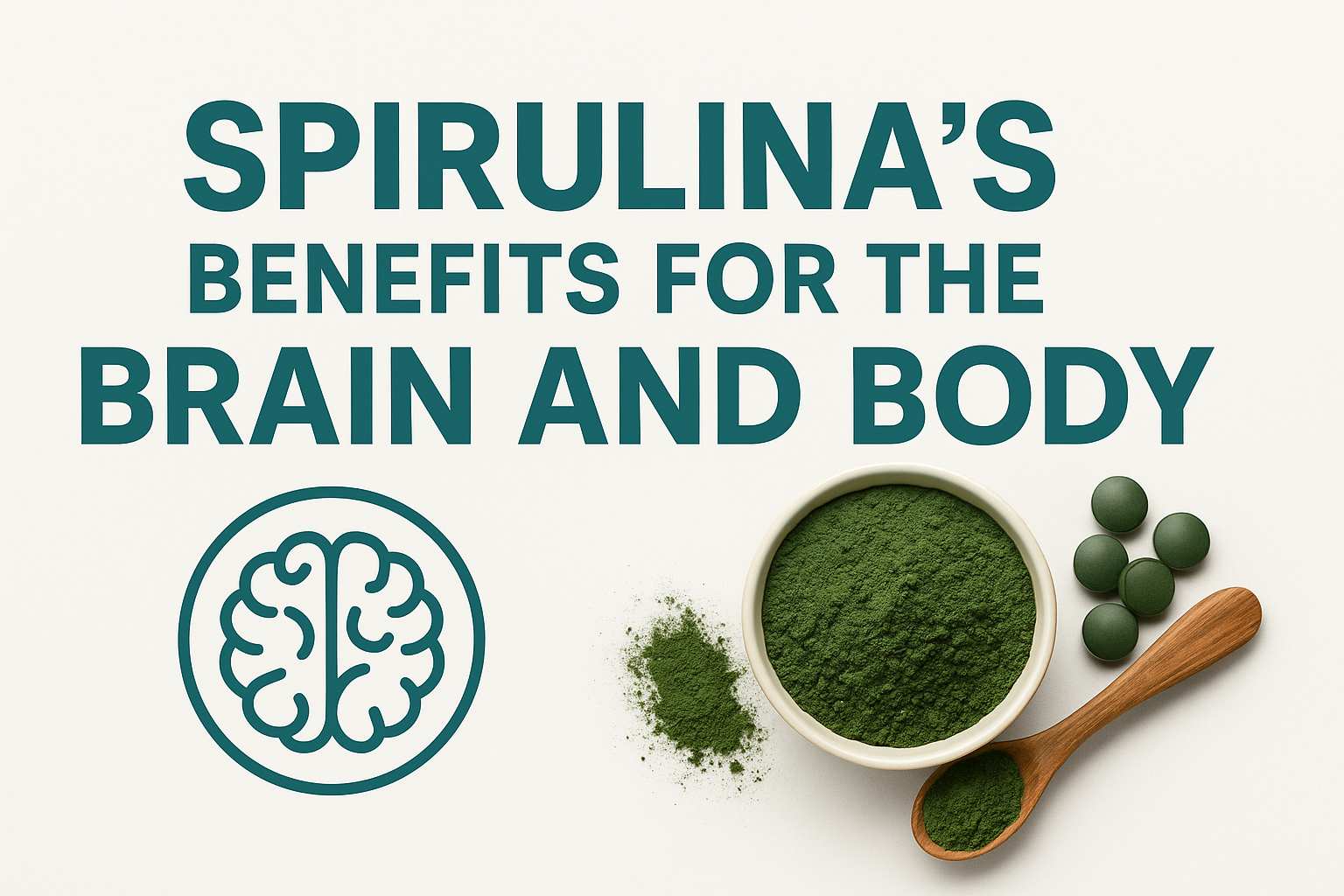People have been eating Spirulina for thousands of years. It's a blue-green aglae that's recently cemented itself as one of nature's most nutrient-dense superfoods. Every single serving of this tiny "creature" (yes, it's alive!) is packed full of proteins, vitamins, minerals, and strong antioxidants.
Studies have shown Spirulina to be good for both brain function and for preserving overall health, so it's the perfect addition to almost anyone's wellness routine.

What really sets apart this blue-green algae is its unique array of nutrients. Quality spirulina is usually about 60-70% protein by dry weight. Along with that, it's also packed with strong beneficial compounds like phycocyanin. It's the unique blend of nutrients that allows spirulina to be so beneficial to the human body.
Studies show that spirulina's antioxidant properties may protect brain cells from damage and improve memory and focus. The algae is also good for your heart, helps keep your blood sugar stable, and gives you more energy. People can get the most health benefits from spirulina if they know how to use it in their daily lives.
Important Points:
- Spirulina is a blue-green algae that is high in protein and has strong antioxidants and nutrients that are good for the brain and body.
- Studies show that spirulina may help adults remember things better, protect brain cells from damage, and support cognitive function.
- When used correctly, the supplement also helps with heart health, the immune system, and energy levels.
What Is Spirulina?

Spirulina is a blue-green algae that is full of nutrients and can be used as both a dietary supplement and a superfood. People have been eating this ancient organism for hundreds of years. It is a complete protein source and has strong antioxidant properties.
Spirulina's History and Origins
Spirulina has already been around for a long time, going back to prehistoric times. The Aztecs got this blue-green algae from lakes in Mexico and ate it as their main food.
People mostly forgot about this superfood until the 1960s. Scientists found out again that spirulina is good for you while they were doing research trips to Africa and Mexico.
Later, NASA saw that spirulina could be used as food in space. The agency suggested growing this supplement in space so that astronauts could get the nutrients they need on long missions.
Spirulina grows naturally in alkaline lakes in Africa, Asia, and Central America. Controlled environments around the world are now used by commercial production facilities to grow this blue-green algae.
Spirulina is one of the most popular dietary supplements on the market, and the supplement industry has embraced it. Every day, millions of people eat this ancient superfood because it is good for their health.
The Science Behind Blue-Green Algae
Spirulina is a type of cyanobacteria, which is a group of single-celled microorganisms. Like plants, these organisms can use sunlight to make energy through photosynthesis.
Blue-green algae can live in both fresh and salt water. It needs certain alkaline conditions with high pH levels to grow well.
Phycocyanin is what makes spirulina blue. This strong antioxidant fights oxidative stress in the body and reduces inflammation.
There is no hard cell wall in the cells of this blue-green algae. This makes the nutrients very bioavailable, which means that the body can easily digest and use them.
All of the amino acids that your body needs are in spirulina. This means that it is a full protein source, just like animal proteins.
The natural "supplement" also has a lot of B vitamins, iron, and copper in it. These nutrients help the body do a lot of things, like make energy and keep the immune system healthy.
Forms, Common Uses, and Foods
You can find spirulina in a number of easy-to-use forms as a dietary supplement. The powder form is still the most popular choice for adding to drinks and smoothies.
Tablets and capsules make it easy to get the right amount of daily supplements. Some people don't like the strong taste of powder, but these forms get rid of that.
A lot of people put spirulina powder in smoothies, juices, and protein shakes. The supplement mixes well with other things to hide its earthy taste.
People who care about their health use this superfood to get more nutrients every day. Many athletes take spirulina before workouts to help them have more energy and stay strong.
Most people take between 1 and 3 grams a day. Most labels on supplements say to start with small amounts and slowly add more.
Food companies now add spirulina to health products like energy bars, chips, and other snacks. This makes it easier for people to eat this blue-green algae on a regular basis.
Nutritional Value of Spirulina

Spirlulina is quite literally packed with nutrients such as proteins and essential amino acids - its an extremely nutrient dense compound. There's very little "filler substance" when it comes to this algae, so it's typically eaten raw and doesn't need to be extracted into higher concentrations.
Protein Content and Amino Acids
About 60–70% of the dry weight of spirulina is protein. This is why it's considered one of the best sources of protein on the planet.
The algae has all nine of the amino acids that the body needs but can't make on its own. One of these is phenylalanine, which helps make important chemicals in the brain.
A complete amino acid profile includes:
- Leucine
- Isoleucine
- Valine
- Lysine
- Methionine
- Threonine
- Tryptophan
- Histidine
- Phenylalanine
The proteins in spirulina are highly digestible. The body can actually absorb and use about 85-95% of it.
One tablespoon (7 grams) of dried spirulina serves up roughly 4 grams of plant protein. This basically equals the amount of protein found in one large egg.
Key Phytonutrients
Phytonutrients are strong plant compounds that are found in spirulina. These chemicals that come from plants help keep cells safe.
Spirulina's blue-green color comes from phycocyanin. This compound is very good at protecting cells and may help lower inflammation.
Chlorophyll is another important phytonutrient in spirulina. It helps the liver stay healthy and gets rid of toxins from the body.
The algae has gamma-linolenic acid (GLA), a healthy fat that helps the brain work better. GLA also helps keep your skin and joints healthy.
Zeaxanthin and cryptoxanthin are two carotenoids found in spirulina. These chemicals are good for your eyes and may lower your risk of getting sick.
Spirulina has antioxidants that help the body fight off harmful molecules that often find their way into our bodies. These protective chemicals (the antioxidants) work together to help you stay in optimal shape!
How Spirulina Supports Brain Health

Spirulina is packed with beneficial compounds for the brain. For example, phycocyanin is known as a strong antioxidant that fights conditions like oxidative stress - its anti-inflammatory compounds help protect us from various forms of cognitive decline.
Antioxidant and Anti-Inflammatory Benefits
Phycocyanin, a blue protein that is one of nature's strongest antioxidants, is found in high amounts in spirulina. This chemical helps get rid of free radicals in the brain that can hurt neurons by causing oxidative damage.
The brain takes in about 20% of the oxygen in the body. This high oxygen use makes more free radicals than other organs do. Phycocyanin stops these bad molecules from hurting brain cells by blocking them.
Many compounds work together to make spirulina anti-inflammatory. Phycocyanin, beta-carotene, and gamma-linolenic acid (GLA) are some of these. GLA is an omega-6 fatty acid that helps the brain's inflammatory response work properly.
Chronic brain inflammation is associated with numerous neurodegenerative disorders. Spirulina helps keep inflammation at a healthy level without stopping the immune system from doing its normal job.
Neuroprotective Effects and Cognitive Decline
Research indicates that spirulina may aid in the prevention of age-associated cognitive deterioration. Spirulina has antioxidants that help keep brain cells working as people get older.
Studies show that eating spirulina can raise the amount of glutathione in the brain. As you get older and more stressed, your brain's main antioxidant, glutathione, runs out.
Research on animals shows that spirulina may help protect against neurodegenerative diseases like Alzheimer's and Parkinson's. Spirulina's compounds stop harmful proteins from building up in the brain.
Iron buildup in the brain leads to neurodegeneration. Spirulina is an iron chelator, which means it helps get rid of extra iron that could hurt brain tissue.
Other Health-Boosting Properties
Spirulina has antioxidants and other important nutrients that help protect important organs and systems. The algae has carotenoids that help protect the liver from harmful toxins, support digestive health, and support eye health.




.png)
.jpeg)


